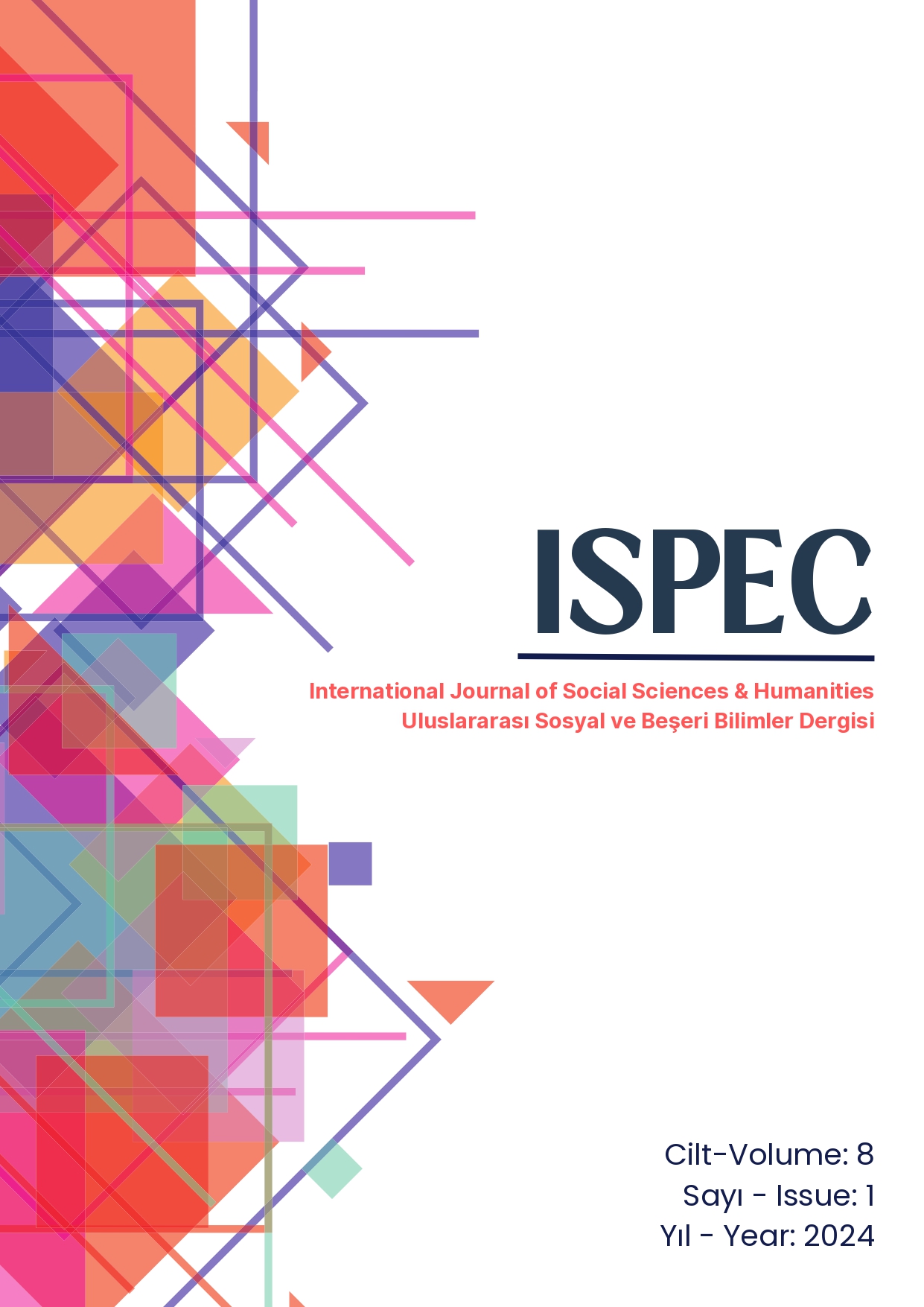A Study On Brand Cities, The Example Of Tea and Rize Province
DOI:
https://doi.org/10.5281/zenodo.10804513Keywords:
Tea, Brand, CityAbstract
Cities make various investments to become brands, to be recognized and to increase their income. Various studies are carried out to recognize your place in the world, improve the city's image, invite investors to the city, and increase tourism revenues. Tea has an important place in world trade. Research shows that tea is integrated with the Rize province. Although cities are similar to each other in terms of lifestyle and have common characteristics, they create some differences throughout the historical process. In this respect, there are various cultural differences even between districts in some of our neighboring provinces. City identity reaches a certain maturity over a long period of time. The expectations of residents and future guests should be met by developing appropriate communication strategies. Branding the city in a certain area or product is extremely important in terms of increasing the value, importance and attractiveness of that place. Branding is important for Rize to become a center of attraction by highlighting its unique values. Rize province has been known and known for its tea for years. In the studies conducted by researchers on Rize, the first thing that came to mind was tea. Rize has various different features other than tea. Rize's historical, cultural and natural riches, plateaus and endemic vegetation create advantages in terms of branding. In addition to focusing only on a single product in branding, it is important to put forward strategies for other strong characteristics of the city in terms of contribution. Document review method was used in the study. The aim of the study is to investigate the contribution of the tea plant, which is integrated and mentioned with the province of Rize, to the branding process. As a result, brand cities and their activities in our country were examined and how Rize could become a brand city with tea was investigated. It has been revealed that the city's potential for change and development can be highlighted with tea. In addition, it has been seen that natural and geographical beauties will contribute to the promotion of the city, but tea is the main element.
References
Anonim, 2023a. https://markakent.blogspot.com/2011/09/kent-markalastrmasnda-yontem-ne-olmal.html.
Anonim, 2023b. https://bebka.org.tr/bursa-sehir-logosu-tanitildi-192/. Erişim tarihi:28.11.2023
Anonim, 2023c. https://www.gaziantep.bel.tr/tr/haberler/marka-sehir-gaziantepe-yeni-logo. Erişim tarihi:28.11.2023.
Anonim, 2023d. http://vektorelcizim.net/gunesin-dogdugu-sehir-samsun-logo
Anonim, 2023e. https://www.dogrulukpayi.com/bulten/kuresel-guclu-sehirler-endeksi-2018-aciklandi
Anonim, 2023f. https://brandirectory.com/reports/brand-finance-city-index-2023. Erişim tarihi:28.11.2023
Anonim, 2023g. https://www.etstur.com/letsgo/rizede-gezilecek-yerler/. Erişim tarihi:28.11.2023.
Demirer, İ., Akgün, S. (2022). Turistik Marka Şehirler Üzerine Bir Saha Araştırması. Uluslararası Akademik Yönetim Bilimleri Dergisi, 8(12).
Şaylan, M. (2013). Gümüşhane Marka Kent Olabilir Mi? 15 Mayıs 2013, https://markakent.blogspot.com/2013/05/gumushane-marka-kent-olabilir-mi.html
Özden, A. T., Bulut, Y. (2019). Şehir markası oluşturma süreci ve bir marka şehir olarak Samsun’un incelenmesi. Artvin Çoruh Üniversitesi Uluslararası Sosyal Bilimler Dergisi, 5(1), 1-22.
Marangoz, M. (2006). Tüketicilerin marka fonksiyonu algılamaları ile satın alma sonrası davranışları arasındaki ilişki. D.E.Ü.İ.İ.B.F. Dergisi. 21:2
Millman, D. (2012). Marka Kültürü. İstanbul: MediaCat Kitapları
Aaker, D.A. (2014). Güçlü Markalar Yaratmak. İstanbul: MediaCat Kitapları
Ries, A., Ries L. (2014). Marka Yaratmanın 22 Kuralı. İstanbul: MediaCat Kitapları
Taşkın, Ç., Akat, Ö. (2012). Marka ve Marka Stratejileri. Bursa: Alfa Aktüel Yayınları
Aaker, D.A. (2015). Markalama. İstanbul: MediaCat Kitapları
Özden, A.T., Bulut, Y. (2019). Şehir Markası Oluşturma Süreci ve Bir Marka Şehir Olarak Samsun’un İncelenmesi. Artvin Çoruh Üniversitesi Uluslararası Sosyal Bilimler Dergisi, 5(1), 1-22.
Karakaş, H.(2022). İstanbul Üniversitesi Sosyal Bilimler Enstitüsü, Halkla İlişkiler ve Tanıtım Yüksek Lisans Tezi.
Küçükcaymaz, E. (2022). Marka Şehir olarak İstanbul’ un İmajının İncelenmesi, İbn Haldun Üniversitesi Lisansüstü Eğitim Enstitüsü, Yüksek Lisan Tezi.
Uyar, A. (2018). Marka Şehir Kavramı ve Türkiye ile Dünyadaki Marka Şehir Çalışmaları Üzerine Bir Araştırma. Uluslararası Yönetim Akademisi Dergisi, 1(3), 467-479.
Kaypak, Ş. (2013). Küreselleşme sürecinde kentlerin markalaşması ve" Marka kentler". C.Ü. İktisadi ve İdari Bilimler Dergisi, Cilt 14, Sayı 1.
Bilgeoğlu, S., Başaran Alagöz, S. (2019). Marka Şehir ve Marka İmajının Ölçümü: Konya Şehir İmajı Üzerine Bir Araştırma. Karamanoğlu Mehmetbey Üniversitesi Sosyal ve Ekonomik Araştırmalar Dergisi, 21(37), 82-100.
Işık, M. (2015). Nasıl Marka Şehir Olunur? City Branding, Eğitim Yayınevi.
Avcılar, M. Y.,&Kara, E. (2015). Şehir Markası Kavramı ve Marka Şehir Yaratma Stratejilerine Yönelik Literatür İncelemesi. Sosyal ve Beşeri Bilimler Araştırmaları Dergisi, 16(34), 76-94.
Yüksel, E. (2019). https://www.dogrulukpayi.com/bulten/kuresel-guclu-sehirler-endeksi-2018-aciklandi
Downloads
Published
How to Cite
Issue
Section
License
Copyright (c) 2024 ISPEC International Journal of Social Sciences & Humanities

This work is licensed under a Creative Commons Attribution-NonCommercial-NoDerivatives 4.0 International License.






